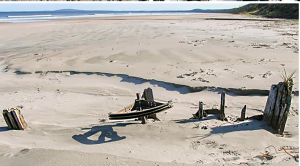8 Activity 2.2 Toxic Heritage and Nation State Politics
Elizabeth Kryder-Reid

Associated Readings:
Case Study 2: Sophia Stamatopoulou-Robbins, “Trash Fires as Toxic Heritage in Palestine.”
Ch. 6: Lisa K. Rankin et al., “Military Legacies and Indigenous Heritage in Canada’s Newest National Park Reserve.”
Targeted Skills:
Comparative Analysis, Research, and Reflection
Suggested format:
Prompt for in-class discussion or assigned comparative essay.
Directions:
In the two readings, Stamatopoulou-Robbins and Rankin et al., nation states have interests in both the creation and curation of toxic heritage. How do the situations in Canada and Palestine compare? What are the respective interests of governments and the affected communities (First Nations and Palestinian)? How is toxic heritage implicated in the power relations between nation states and these communities?
Supplemental Directions:
a) Research current events in Palestine. How is the toxic heritage reported in news coverage? How does that presence or absence of coverage mean for Stamatopoulou-Robbins’ argument about the use of pollution as an instrument of control?
b) Read Max Liboiron’s Pollution Is Colonialism. (Durham, NC: Duke University Press, 2021). How does the case of Akami-Uapishk-KakKasuaak-Mealy Mountain National Park Reserve (MMNPR) discussed in Rankin et al. exemplify the entanglements of toxic heritage and colonialism?

